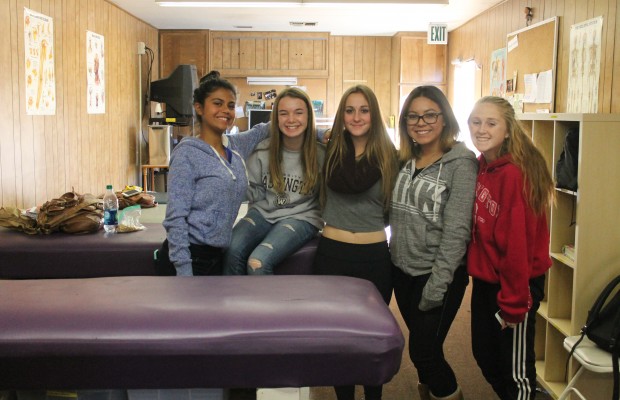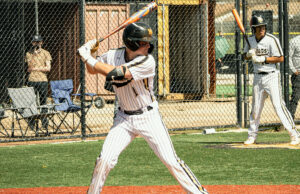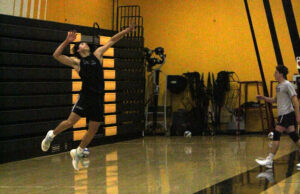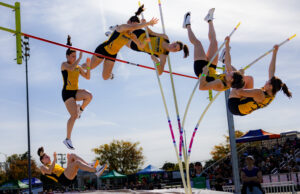Behind the lines – Athletic Trainers treat and prevent injuries

On the sidelines of the football field, players shift restlessly in their jerseys. Coaches in polo shirts pace in front of the players and cheerleaders in stiff skirts pump up the crowd behind them. Other people in white shirts and khakis mill around on the sidelines, observing the game, refilling water bottles, or stretching players’ legs.
These are the students of the athletic training program.
The program provides student athletes with injury prevention and treatment while also giving participants surface exposure to the sports medicine field. Since the late 1990s, athletic trainers at NPHS have provided aid for football, soccer, basketball, track and field, softball, and baseball teams, as well as any individual athlete requiring evaluation and treatment.
“(Students) learn about injury prevention, taping techniques and how to evaluate some of those injuries and treat them,” said Chris Soury, head athletic trainer, football coach and physical education teacher. “So if an athlete sprains his ankle, (we teach) the next steps to do so they can quicken the recovery process to get them back on the field sooner.”
Trainer Lindsey Dickerson, junior, explains that trainers split the work based on the amount of experience of each individual in the program.
“How many years you’ve been in the program kind of determines what team you get to work and what you can do. The longer you’ve been in, you’ll work with the higher teams just because you have more knowledge about the craft and what you can help the players with,” Dickerson said.
Dickerson joined the program as a freshman after being encouraged by a close friend’s sister. Since then, the program has expanded and just started implementing an application process for trainers this year that includes an interview and an assessment of student’s GPAs, which must remain at least a 2.0.
“There’s been a higher number of students that want to participate in it, and unfortunately we can’t just have everybody,” Soury said. “Then it’s too many people and not as much to do … that’s why we introduced the application and the interview process similar to how ASG does theirs.”
In addition to the afterschool training program, the separate sports medicine class offers even greater in-depth exploration of the sports medicine field by applying more advanced anatomy principles to the practice.
“(The class) encompasses anatomy; it encompasses injury detection, evaluation of injuries, special tests you need to do to differentiate what part of the body is injured, a little bit of rehabilitation techniques, taping, bracing, and splinting,” said Lorena Caulfield, sports medicine teacher.
The class is open to juniors and seniors as a block class in both spring and fall semesters. While it isn’t a requirement for participation in the athletic training program, Caulfield said that taking the class will be especially helpful if a student is “going to study anything sports medicine related in college.”
“The athletic training class is coverage of the athletic practices in the athletic context. Those students are also doing game management, so they’re setting up water bottles, they’re making sure people are taped,” Caulfield said. “They are not necessarily going to be doing evaluations on everybody. My students go in depth into the anatomy whereas the student athletic trainers do not get that much detail.”
Newbury Park High School’s athletic training opportunities are rare since many schools do not have the proper personnel to lead such a program.
“What’s unique about it is that a lot of schools don’t have certified athletic trainers like myself and Mrs. Caulfield in staff at their school,” Soury said. “So they don’t really have classes…where students can learn these skills.”
The athletic training program at NPHS offers both students and student athletes opportunities to advance their interests, whether it be in sports or sports medicine.
“It’s taught me a lot about the field and all of what sports medicine has to offer career wise,” Dickerson said. “It’s also taught me a lot about working with other people and getting to know my peers. It definitely helps me with problem solving and figuring out how to work with different teamwork.”



